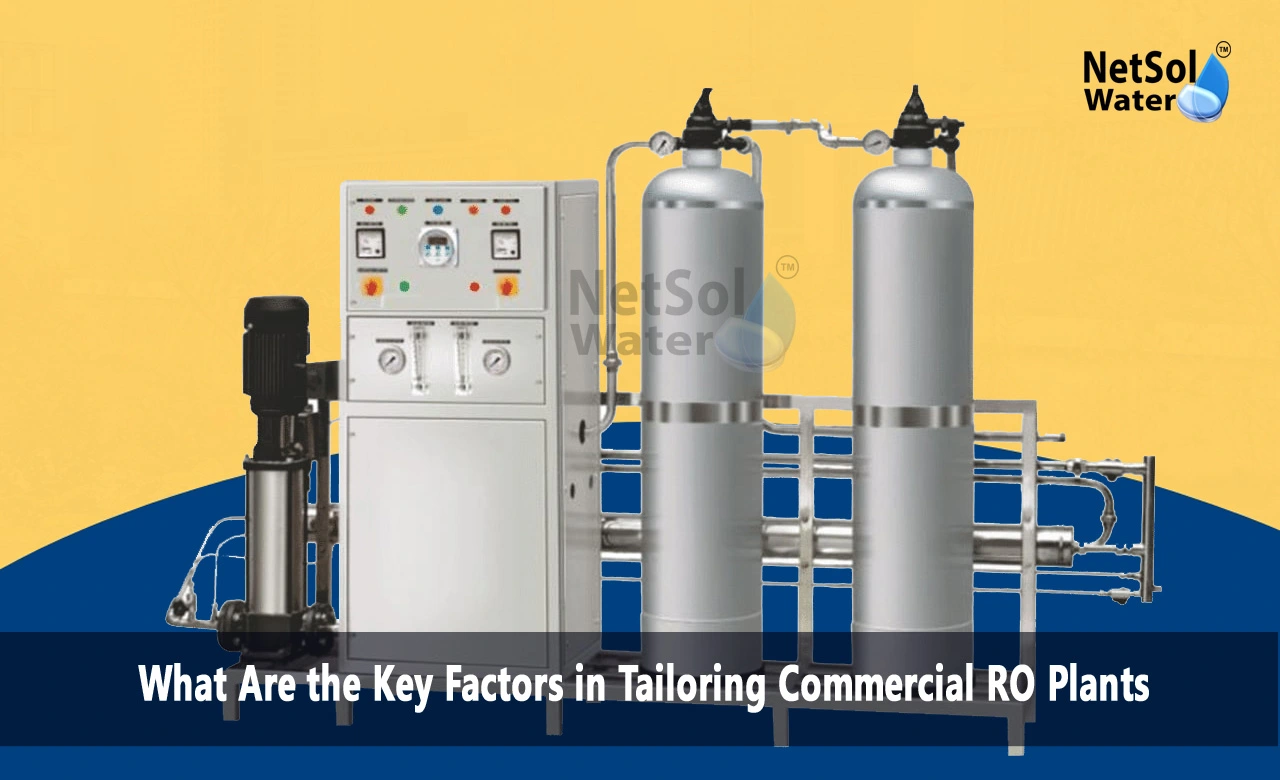What Are the Key Factors in Tailoring Commercial RO Plants?
The access to clean water is important for both human health and industrial processes. Various advanced technologies are used to achieve purified water and one of the technologies at the forefront of water purification is Reverse Osmosis (RO). Commercial RO plants play a significant role in providing clean water for various purposes, from drinking to industrial use. Designing these plants requires careful consideration of several key factors to ensure optimal performance and efficiency.
Understanding Reverse Osmosis
Before examining the factors involved in tailoring commercial RO plants, it’s essential to understand the process of reverse osmosis. Simply put, reverse osmosis is a water purification technology that uses a semi-permeable membrane to remove ions, molecules, and larger particles from water. This membrane allows water molecules to pass through while blocking contaminants, producing clean and purified water.
Key Factors in Tailoring Commercial RO Plants
Water Quality and Composition:
The quality and composition of the feed water greatly influence the design of an RO plant. Factors such as the presence of contaminants, mineral content, and pH levels must be thoroughly analyzed. Understanding the water chemistry helps in selecting the appropriate membrane and pre-treatment processes to ensure efficient filtration and prevent membrane fouling.
Flow Rate and Capacity:
Determining the required flow rate and capacity of the RO plant is crucial for meeting the demand for clean water. Factors such as peak demand, production schedule, and future expansion plans need to be considered. Proper sizing of the plant ensures consistent water supply without overloading the system or wasting resources.
Membrane Selection:
Choosing the right membrane is paramount for the success of an RO plant. Membranes come in various types, each suited for specific water conditions and contaminants. Factors such as pore size, material composition, and fouling resistance influence membrane selection. Conducting pilot studies and water quality testing helps in identifying the most suitable membrane for the application.
Pre-Treatment Processes:
Pre-treatment plays a critical role in protecting RO membranes and enhancing overall system performance. Processes such as sediment filtration, activated carbon filtration, and chemical dosing help remove suspended solids, organic matter, and chlorine from the feed water. Proper pre-treatment prevents fouling, scaling, and chemical damage to the membranes, thereby prolonging their lifespan and reducing maintenance costs.
Energy Efficiency:
Energy consumption is a significant consideration in the design of RO plants. Optimizing energy efficiency not only reduces operational costs but also minimizes environmental impact. Factors such as pump selection, pressure control, and recovery rates influence energy consumption. Implementing energy recovery devices and efficient pump systems can significantly reduce power requirements while maintaining high-performance levels.
System Monitoring and Control:
Monitoring and controlling the RO system is essential for ensuring reliable operation and timely maintenance. Installing sensors and instrumentation for monitoring parameters such as pressure, flow rate, and water quality allows for real-time performance tracking. Automated control systems enable adjustments to operating parameters based on changing conditions, optimizing system efficiency and productivity.
Maintenance and Serviceability:
Designing RO plants with ease of maintenance in mind helps minimize downtime and prolong system life. Accessible components, modular design, and predictive maintenance strategies simplify routine servicing and troubleshooting. Training personnel on proper maintenance procedures and scheduling regular inspections and cleaning tasks are essential for optimal plant performance.
Conclusion
Creating commercial RO plants needs careful planning to make sure they work well and give clean water consistently. We need to check the water quality, pick the right membranes, use less energy, and do proper maintenance. By doing these things, RO plants can give a steady supply of clean water for different uses. If we design them well and pay attention to the details, RO plants can help solve water problems and support sustainable growth.
By following these important steps, people involved can make RO plants that suit the specific needs of water treatment, while using energy efficiently and causing less harm to the environment. With new technology and research, the future of RO plants looks promising. They could become even better at giving clean water to communities and industries around the world.
Do you need an advice or assistance on selecting the best water and waste water treatment unit? We have solutions for all your problems!
Let us now your problem, our experts will make sure that it goes away.
For an assistance or related query,
Call on +91-965-060-8473 Or write us at enquiry@netsolwater.com



